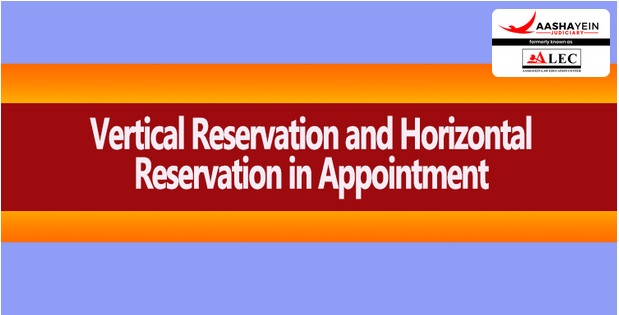What is reservation?
Reservation is a type of affirmative action aimed at fostering equality for marginalized groups by safeguarding them against social and historical injustices. It typically involves providing preferential access to education and employment opportunities for underprivileged sections of society.
Initially, this system was introduced to address longstanding discrimination and uplift disadvantaged communities. In India, caste-based discrimination has historically been a significant factor necessitating such measures.
You can also read the latest judgment by visiting [Latest Judgment].
For more information, visit [Aashayein Enquiry Section]
What is reservation as per the constitution of India
The Constitution of India, 1950 (COI) includes several provisions related to reservations, particularly for Scheduled Castes (SCs) and Scheduled Tribes (STs):
- Part XVI of the Constitution addresses the reservation of SCs and STs in the Central and State legislatures.
- Articles 15(4) and 16(4) empower the State and Central Governments to reserve positions in government services for SC and ST communities.
- The 77th Amendment Act, 1995 introduced Article 16(4A), enabling reservations in promotions for SCs and STs. The 85th Amendment Act, 2001 later modified this clause to grant consequential seniority to SC and ST candidates promoted under reservation policies.
- The 81st Amendment Act, 2000 added Article 16(4B), allowing the state to carry forward unfilled reserved vacancies for SCs and STs into subsequent years, bypassing the 50% reservation ceiling on total vacancies for a given year.
- Articles 330 and 332 ensure specific representation for SCs and STs through reserved seats in Parliament and State Legislative Assemblies, respectively.
- Article 243D mandates reservation of seats for SCs and STs in Panchayats, while Article 243T extends similar provisions to Municipalities.
- Article 335 stipulates that the claims of SCs and STs must be considered in a manner consistent with maintaining the efficiency of administration.
TYPES OF RESERVATION
The reservation policy is divided into two parts:
- Vertical reservation
- Horizontal reservation
Based on these criteria, the recruitment to government jobs and other competitive exams is done in the country.
Vertical Reservations:
Vertical reservations refer to the allocation of reserved seats or positions for certain backward communities, such as Scheduled Castes (SC), Scheduled Tribes (ST), Other Backward Classes (OBC), and Economically Weaker Sections (EWS), as outlined under Article 16(4),(5) & (6) of the Indian Constitution. Key features include:
- Exclusive: Reserved seats are designated solely for members of the specified communities.
- Non-transferable: Unfilled reserved seats cannot be allocated to candidates from other categories.
- Capped: The Supreme Court has imposed a 50% limit on total vertical reservations to maintain a balance with merit-based selection( Indra Sawhney case).
Horizontal Reservations:
Horizontal reservations apply across vertical categories and are designed for other disadvantaged groups, such as women, persons with disabilities, and veterans. Key characteristics include:
- Inter-transferable: If the quota for a horizontal reservation is not filled, the remaining seats can be offered to other eligible candidates within the same vertical category.
- Minimum Guarantee: These ensure a specific percentage of reserved seats for these groups, regardless of their vertical category.
Key Differences Between Vertical and Horizontal Reservations:
- Basis of Allocation: Vertical reservations are determined by social and educational backwardness, while horizontal reservations address additional disadvantages, such as gender or disability.
- Intersection: Horizontal reservations overlay vertical ones, allowing candidates to benefit from both categories. For example, an OBC woman may qualify under both OBC reservation and women’s reservation.
Supreme Court Judgments
Saurav Yadav vs The State of Uttar Pradesh Case
Facts of the case:
Saurav Yadav versus State of Uttar Pradesh 2020 dealt with issues arising from the way different classes of reservation were to be applied in the selection process to fill posts of constables in the state.
Sonam Tomar scored 276.59 marks and Rita Rani had secured 233.1908 marks. They had applied under the categories of OBC-Female and SC-Female respectively. OBC and SC are vertical reservation categories, while Female is a horizontal reservation category.
The issue with this was that these two candidates did not qualify, however, a girl with 274.82 marks and belonging to the general category had qualified for the exam. A question is raised here on the reservation policy for the examination.
Supreme Court’s Verdict:
The court ruled against the Uttar Pradesh government, stating that if a person belonging to an intersection of the vertical-horizontal reserved category had secured scores high enough to qualify without the vertical reservation, the person would be counted as qualifying, and cannot be excluded from the horizontal quota in the general category.
This was as a counter answer to the UP government’s policy to restrict and contain reserved category candidates to their own categories.
Court’s Reasoning:
- If both vertical and horizontal quotas were to be applied together, a high-scoring candidate who would otherwise qualify without one of the two reservations is knocked off the list — then the overall selection would have candidates with lower scores.
- On the other hand, if a high-scoring candidate is allowed to drop one category, the court found that the overall selection would reflect more high-scoring candidates.
- In other words, the “meritorious” candidates would be selected.
Conclusion
Understanding the nuances of vertical and horizontal reservations is crucial for grasping how India’s reservation policy aims to balance social equity with meritocracy. By providing these differentiated systems of affirmative action, the policy aims to address both the broad social inequities and specific disadvantages affecting smaller groups within those communities.

